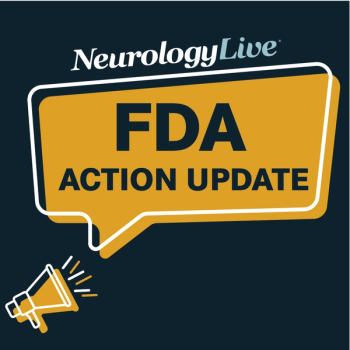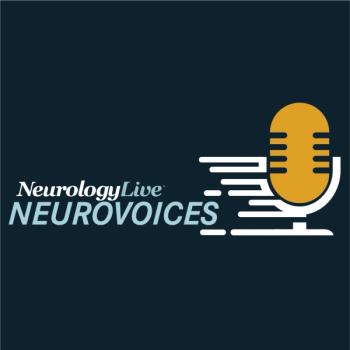
Alkermes embarks on the phase 2 Vibrance-1 trial to evaluate the safety and efficacy of ALKS 2680 against placebo as a once-daily treatment for narcolepsy type 1.

Isabella Ciccone, Associate Editor, NeurologyLive®, has been with the team since September 2022. Follow her on Twitter @iciccone7 or email her at [email protected]

Alkermes embarks on the phase 2 Vibrance-1 trial to evaluate the safety and efficacy of ALKS 2680 against placebo as a once-daily treatment for narcolepsy type 1.

In a recent study assessing basal ganglia activity during REM sleep, results revealed that elevated beta power may be correlated with the severity of REM sleep behavior disorder in Parkinson disease.

A recent study recognized anti-DAGLA autoantibodies in the cerebrospinal fluid of a small group of patients, suggesting that it could be a potential biomarker for diagnosing cerebellar ataxia.

Avidity Biosciences is anticipated to initiate its phase 3 HARBOR trial assessing AOC 1001 as a treatment for patients with myotonic dystrophy type 1 in the second quarter of 2024.

Catch up on any of the neurology news headlines you may have missed over the course of April 2024, compiled all into one place by the NeurologyLive® team.

Clinical trials assessing cell therapies for Parkinson disease treatment may show early potential in improving both motor and nonmotor symptoms.

Treatment with SAGE-324/BIIB124 for essential tremor resulted in adverse events that included somnolence, dizziness, fatigue, and balance disorder.

Findings from a recent study suggest that the presence of negative myoclonus may serve as a diagnostic clue for progressive myoclonus ataxia, suggesting the presence of genetic disorders.

Despite failing to meet the primary end point, AMO-02 achieved clinically and statistically significant benefit in various functional and objective assessments in the phase 2/3 REACH-CDM trial.

A recent case series showed concerning trends of neurological conditions from mosquito-borne diseases impacting patients living in Canada and the United States.

To date, treatment with foralumab has shown promising results in stabilizing or improving clinical measures without serious adverse effects among patients with non-active secondary progressive multiple sclerosis.

Recent preclinical findings revealed SBT-589's potential to treat cardiomyopathy in Friedreich ataxia by targeting mitochondrial dysfunction.

Leslie Citrome, MD, MPH, clinical professor of psychiatry and behavioral sciences at New York Medical College, shared his reaction to the recently approved new sprinkle formulation of valbenazine for patients with tardive dyskinesia.

Data from the phase 2 open label extension study investigating subcutaneous injections of nomlabofusp for Friedreich ataxia is expected in the fourth quarter of 2024.

The professor of neurology at Mayo Clinic talked about the need for comprehensive testing, careful consideration of criteria for diagnosis, and effective treatment in MOG antibody-associated disease.

The original approval for chorea associated with Huntington disease was based on the phase 3 KINECT-HD study, an 128-patient cohort trial in which valbenazine met its primary end point.

As part of our monthly clinician spotlight, NeurologyLive® highlighted movement disorder expert Kelly Papesh, DNP, APRN, FNP-BC, executive director of the Association of Movement Disorder Advanced Practice Providers.

In recent news, Lexeo Therapeutics' gene therapy candidate LX2006 received FDA fast track designation for patients with Friedreich ataxia cardiomyopathy.

A recent study showed the relationship between genes associated with lysosomal function and environmental exposure to pesticides in Parkinson disease.

A case study of a 52-year-old Korean woman revealed the potential of Nanopore long-read sequencing in diagnosing atypical late-onset ataxia-telangiectasia.

Ofatumumab showed a consistent and long-term reduction in relapse rates and MRI lesion activity in patients with recently diagnosed, treatment-naïve relapsing multiple sclerosis.

Paula Emanuela Voinescu, MD, PhD, director of the Women's Epilepsy Program at Brigham and Women's Hospital, talked about the influence of sex hormones on maternal outcomes in pregnant women with epilepsy treated with antiseizure medication.

Kate Labiner, MD, a pediatric epileptologist at Child Neurology Consultants of Austin, talked about the potential of cenobamate in pediatric patients with refractory focal epilepsy who have failed multiple medications.

An analysis of a phase 3 trial of low sodium oxybate in patients with idiopathic hypersomnia identified a minimal clinically important difference in the visual analog scale for sleep inertia.

A phase 3b study showed that switching from intravenous C5 inhibitors to subcutaneous zilucoplan in patients with myasthenia gravis was associated with symptom improvement at 12 weeks.

Even at the highest modal dose range, findings from the phase 3 RISE-PD trial showed that IPX203 did not increase safety risks for patients with Parkinson disease over time.

New findings from the phase 3 PROOF-HD trial showed that pridopidine outperformed placebo up to 78 weeks in patients with Huntington disease even after excluding those on neuroleptics and antichorea medications.

ALKS 2680, an investigational orexin 2 receptor agonist, showed promise for improving sleep latency in patients with narcolepsy type 2 and idiopathic hypersomnia in a phase 1b study.

The FDA has approved a label update on the administration options for SK Life Science’s cenobamate, a treatment approved for adults with partial-onset seizures.

The executive vice president and chief research officer of the Muscular Dystrophy Association shared her reaction to the recent FDA approval of givinostat for Duchenne muscular dystrophy.